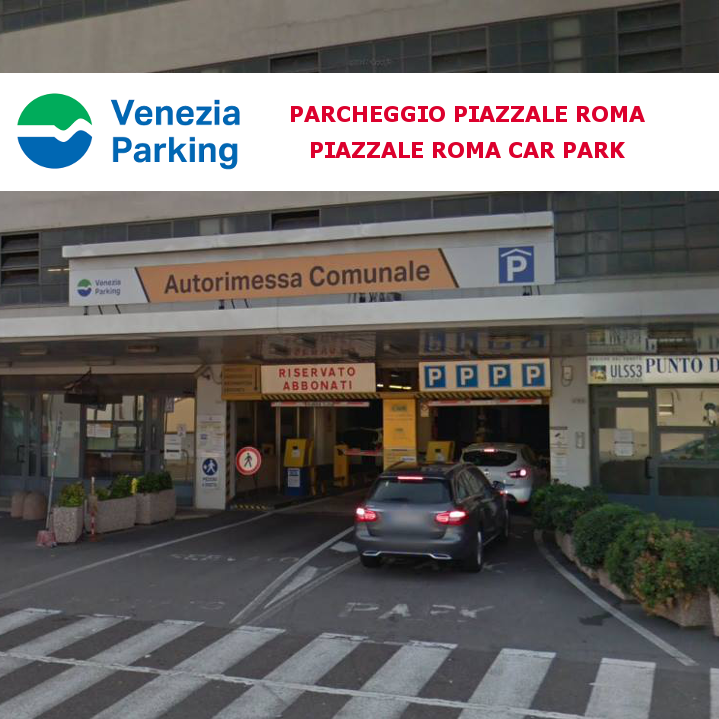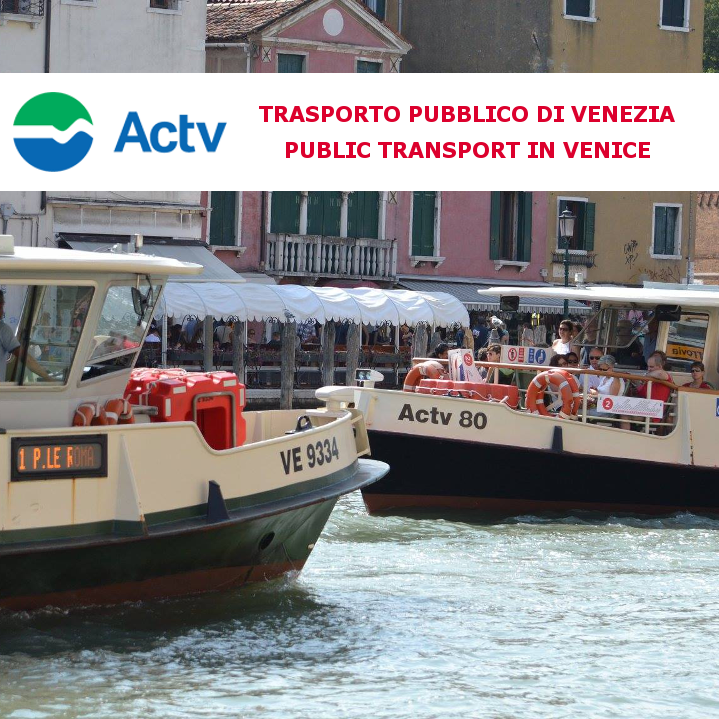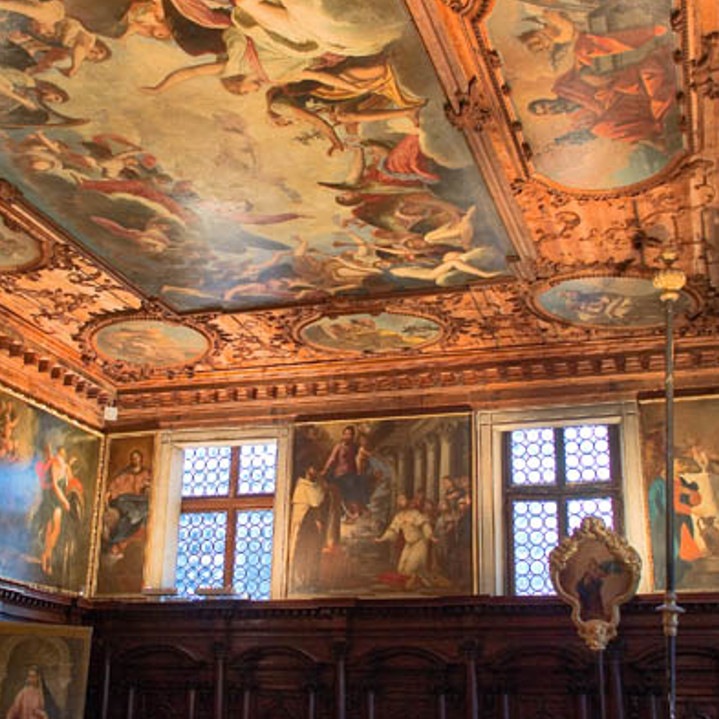You are here
Parks and public gardens of Venice
PARKS AND PUBLIC GARDENS IN VENICE
Venice is unsuspectedly rich in parks and gardens, green oases nestled between palaces and canals. Enjoying the shade of the avenues in the company of ancient statues, discovering unexpected flowery corners, strolling under historical pergolas are unique experiences that will make you fall even more in love with the inestimable heritage of nature, art and history of the lagoon city, a UNESCO-protected site.
In the historical centre alone, there are some 112,000 square metres of public green space, divided into several gardens scattered around the city. Almost all of these parks have benches where you can sit for a rest. There are also drinking fountains and public toilets nearby.
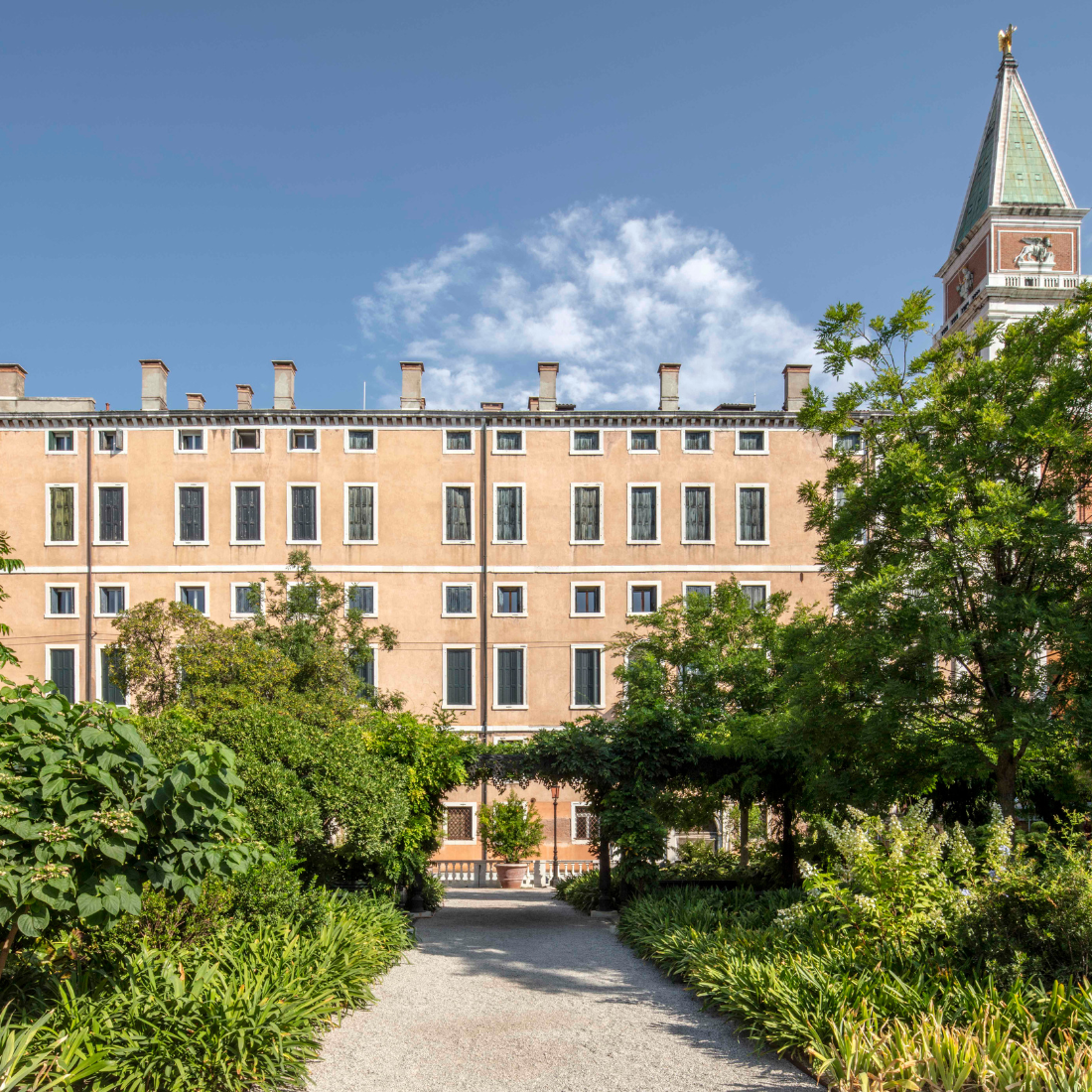
ph. Giorgio Bombieri - Comune di Venezia
VENICE'S ROYAL GARDENS
Overlooking the Bacino di San Marco, the Giardini Reali enchant visitors with the botanical exuberance of this green space, ever changing with the seasons.
Each month sees a succession of new blooms, reaching a peak in July when five thousand blue and white Agapanthus bloom.
The history of the Giardini Reali dates back to the early 19th century, when Napoleon planned to transform the Marciana area to build a new Royal Palace, the so-called Napoleonic Wing, and at the same time endow the palace with a garden, directly connected by a drawbridge.
At one end of the garden a greenhouse was built, on the Ponte della Zecca, towards the square, and on the opposite side a pavilion in neoclassical style, the Cafehaus, used in summer as a place of recreation for the court and as a greenhouse in winter. With the entry of Venice into the Kingdom of Italy, the pavilion was opened to the public as a 'coffee house'. Today, after a major restoration completed in 2019, the Giardini Reali have regained their magnificence and original design. Admission is free. The Royal Gardens of Venice are protected cultural heritage. Visitors are kindly asked to respect the setting: sitting on the ground, picnicking and consuming alcohol are not permitted.
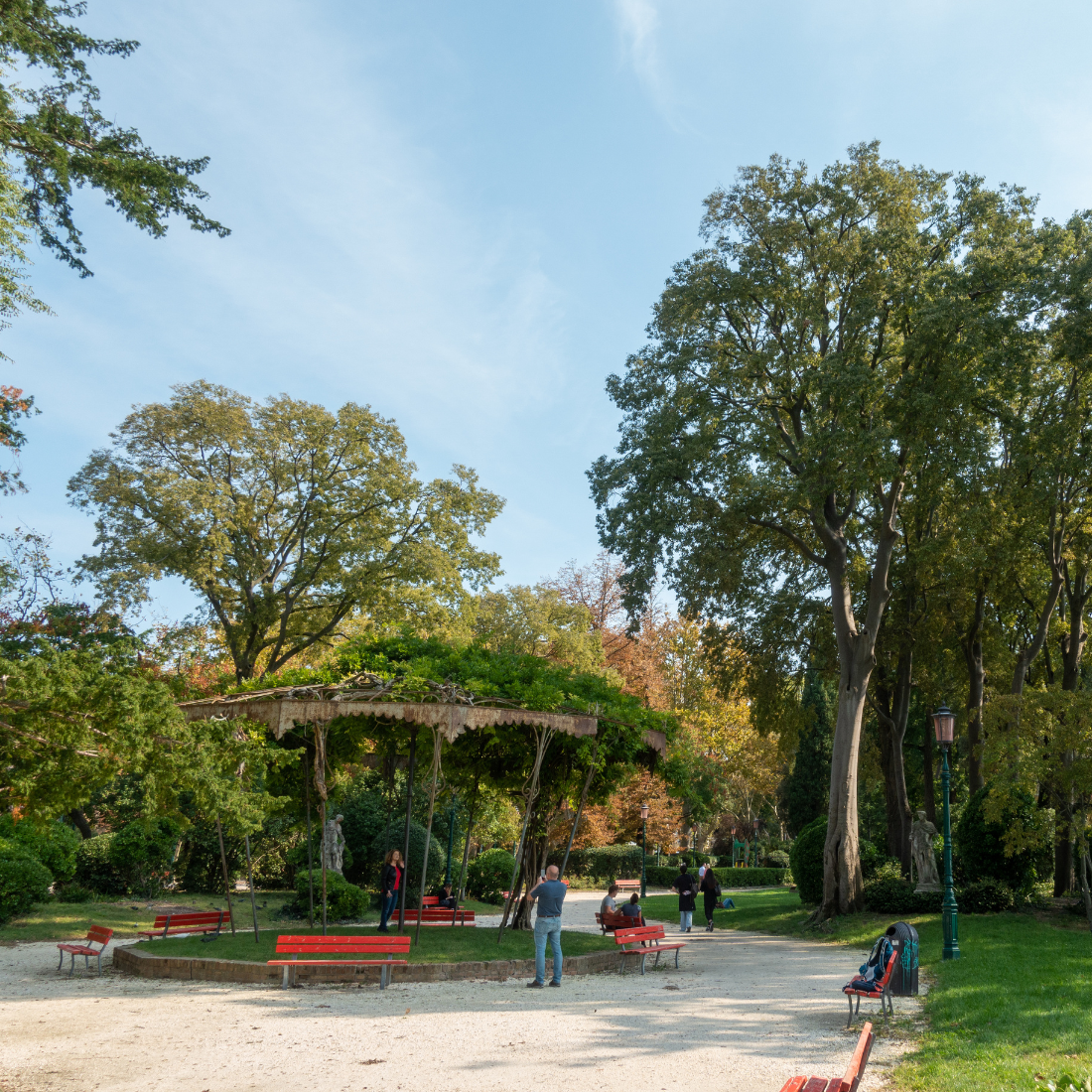
ph. Kent Wang from Barcelona CC BY-SA 2.0 via Wikimedia Commons
THE CASTELLO GARDENS
The Castello Gardens are considered the most important and largest green area in the city centre: 65,000 square metres, about two thirds of which are now occupied by the Biennale, where some monumental tree specimens also grow.
Here, every year, art and architecture exhibitions alternate within the 30 pavilions surrounded by vegetation.
The origins of this garden, created between 1808 and 1812, are due to Napoleon, who wanted to build a park for the citizens in this area of the Castello district, one of the first in Italy. It was architect Giannantonio Selva who drew up the plan for the park. It was also decided to connect these 'popular' gardens with the Giardini Reali di San Marco through a promenade that started along the Strada Eugenia - the widest street in Venice, built by burying the Rio di Castello canal, renamed Via Garibaldi in 1866 - and continued along the Riva degli Schiavoni, which was also widened. Today, the Napoleonic Gardens of Castello are a perfect combination of art and nature, with benches inviting you to take a break and sculptures set in the shade of the trees along the avenues.
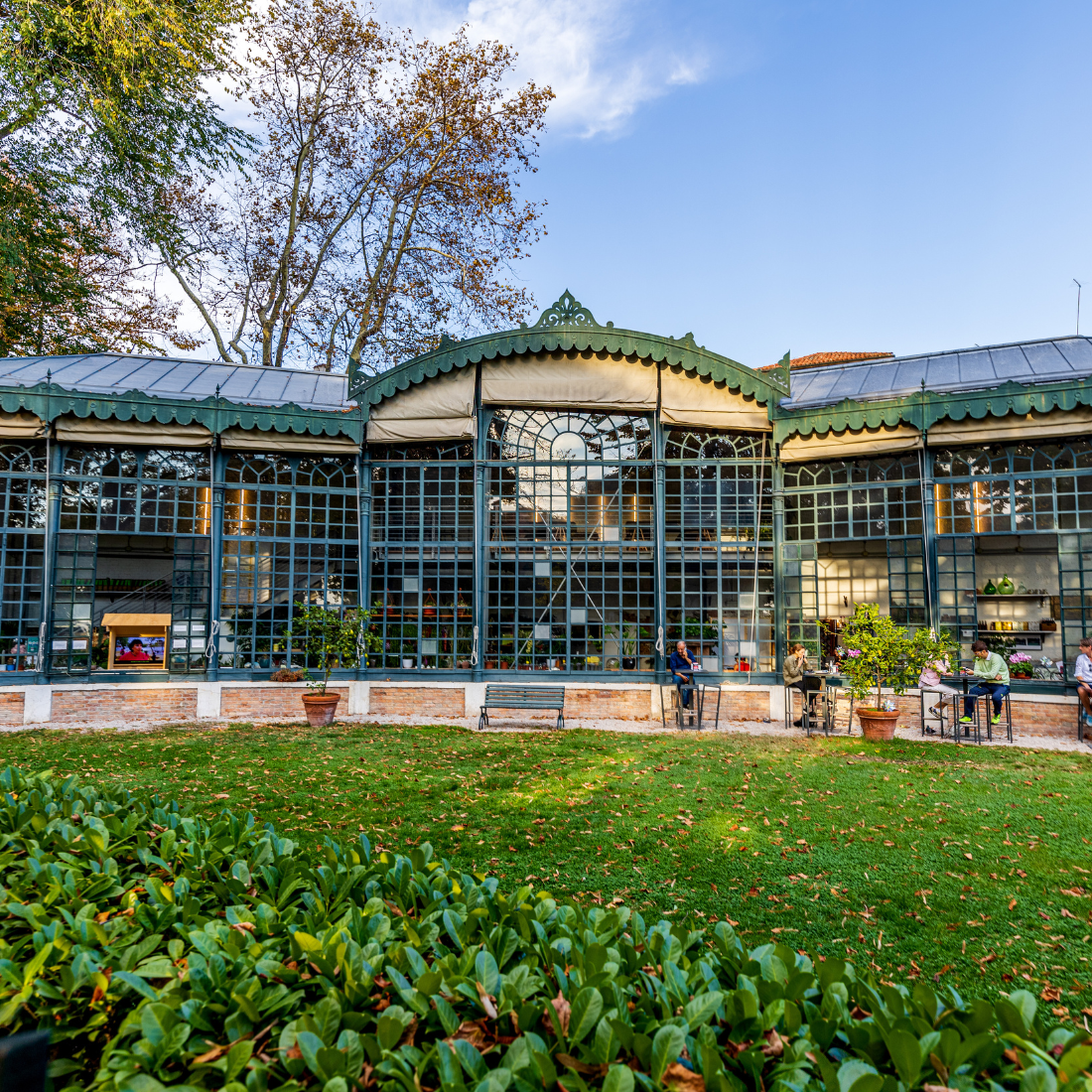
ph. Matthisa Süßen CC BY-SA 4.0 via Wikimedia Commons
THE SERRA DEI GIARDINI
The elegant Serra dei Giardini is a late 19th century Art Nouveau greenhouse located between the Giardini della Biennale and Viale Garibaldi, which today houses a flower shop and a small cafeteria where events, concerts and educational workshops are also held.
Historically known as Serra Margherita, it was conceived in 1894 as a glass tepidarium to shelter palm trees and exotic plants from the cold, used for the first International Art Exhibition. Originally, the Greenhouse was painted white like most 19th-century European greenhouses, and today it is the only surviving evidence of the International Art Exhibition, the first Art Biennale.
Over the course of time, the Greenhouse changed its use, from being used as a depot and a municipal gardener's activity until it was abandoned in the 1990s. Today, the Venice City Council has restored the Serra to its former splendour, partially recovering the structure's original function and creating a public space dedicated to nature and cultural activities.
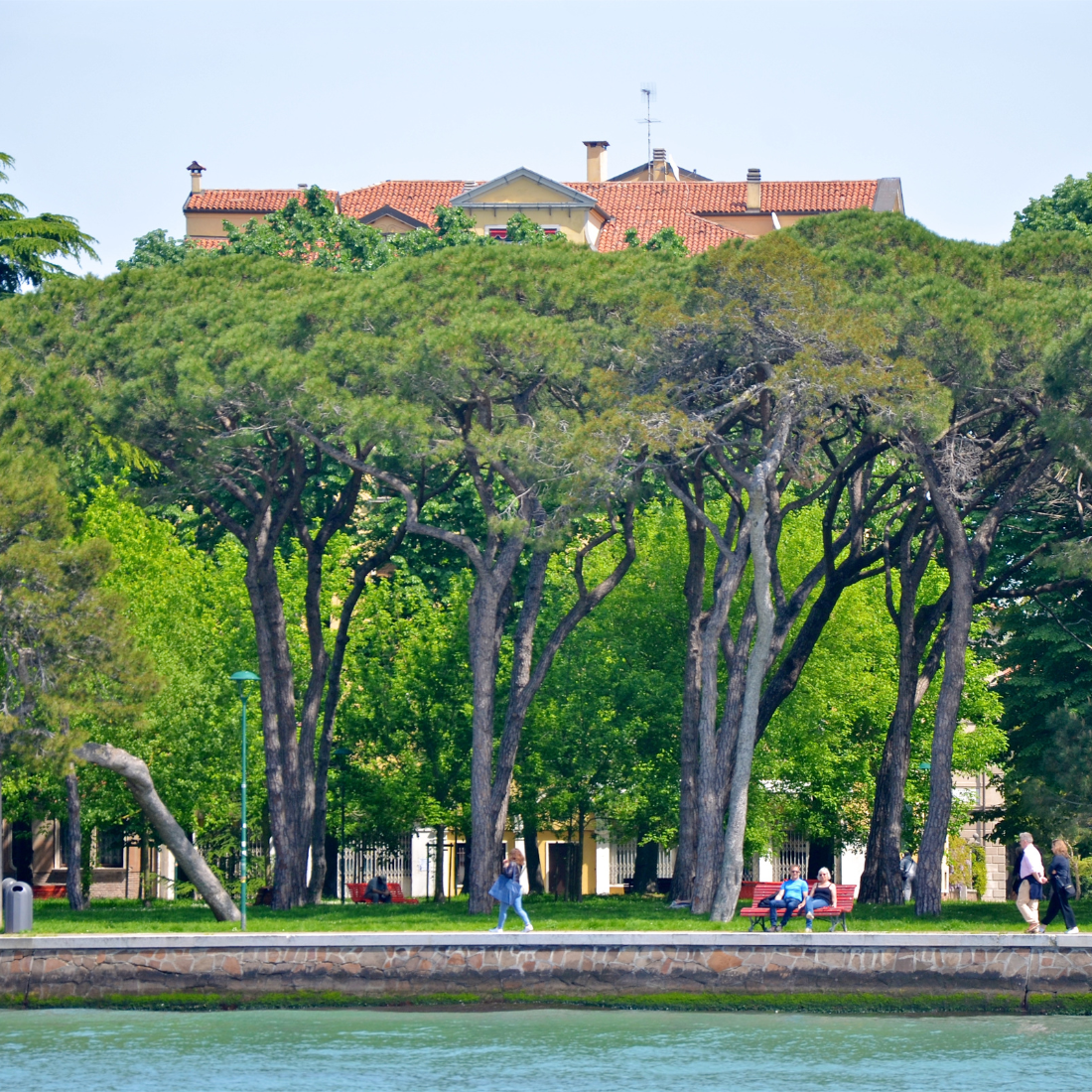
ph. Joe Shlabotnik CC BY-NC-SA 2.0 via Flickr
THE PINE FOREST OF SANT'ELENA
A walk through the pine forest with a view of the lagoon: the Island of Sant'Elena is one of the greenest areas in Venice, thanks to the large and airy pine forest - Parco delle Rimembranze - that rises in front of the lagoon in continuity with the public gardens of Castello, to which it is connected by a bridge.
Criss-crossed by shady paths, it is the ideal place for peaceful walks, with an unprecedented view of St Mark's Basin, sweeping your gaze as far as the islands of Lido and San Servolo. This vast open green area, created in the early decades of the 20th century, is also called Pineta di Sant'Elena due to the large number of pine trees.
The area is equipped with benches, waste bins and children's games. There are public toilets and two drinking water fountains. There are also football, tennis, volleyball and basketball courts, and a fitness area.
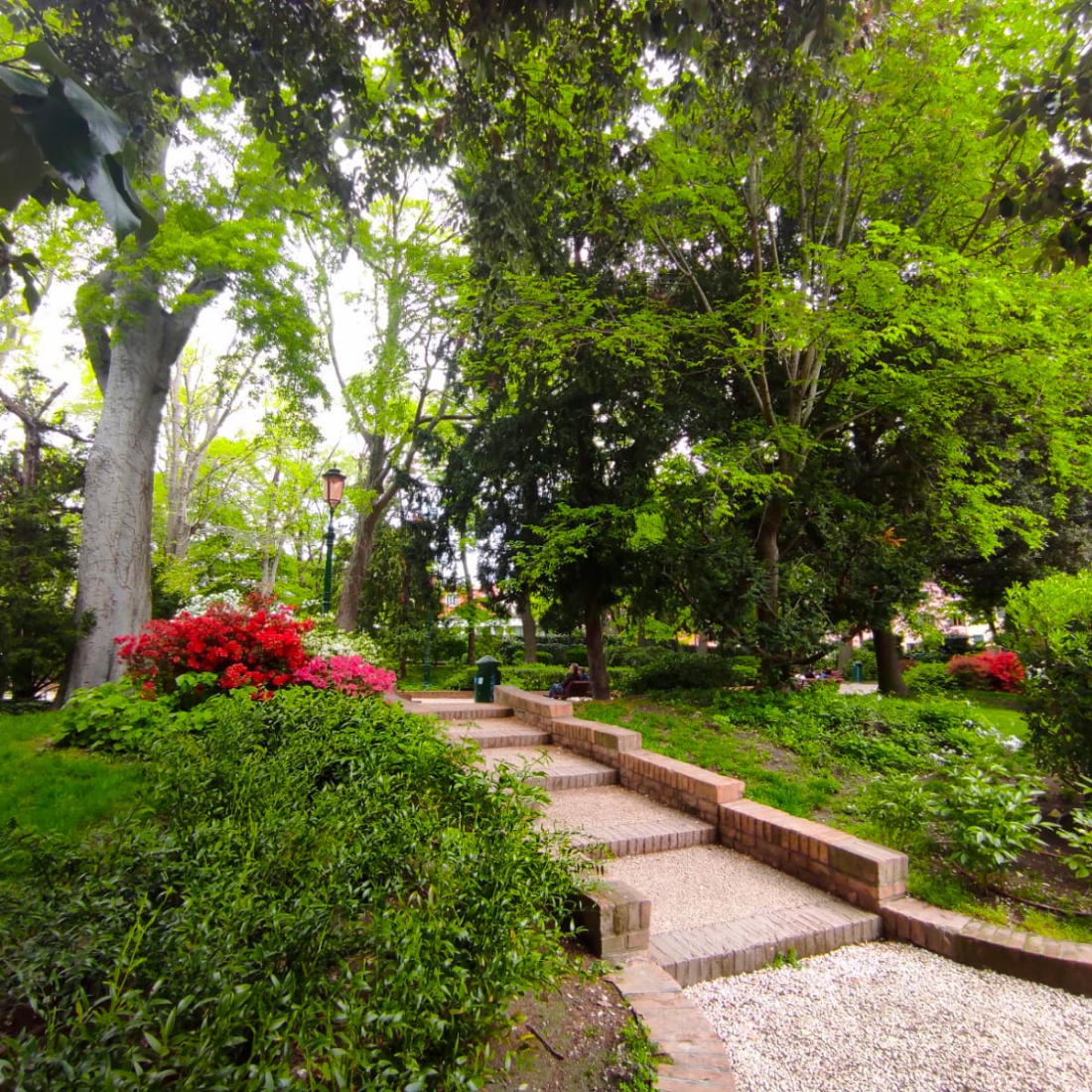
ph. Comune di Venezia
THE PAPADOPOLI GARDENS
Until the early decades of the 20th century, the Papadopoli Gardens at Tolentini, in the Santa Croce district, were among the most extensive gardens of romantic inspiration in Venice. They were created in 1834 by Count Spiridione Papadopoli - a member of one of the most illustrious families of Greek origin in Venice - and his wife Teresa Mosconi. Apparently it was the Countess herself who entrusted the design of the large romantic park at their palazzo ai Tolentini to Francesco Bagnara, landscape architect and scenographer of the La Fenice Theatre.
The Papadopoli family used to spend the summer here, spending much time in the garden, reading and walking in the greenery. Parties and social gatherings of nobles, artists and men of letters were often held here. The present gardens are all that remains of the vast original park, hit by a bomb during the First World War and reduced in size in the 1930s: part of the park was occupied by the car terminal in Piazzale Roma, where only a few majestic holm oaks and a small fountain survive today.
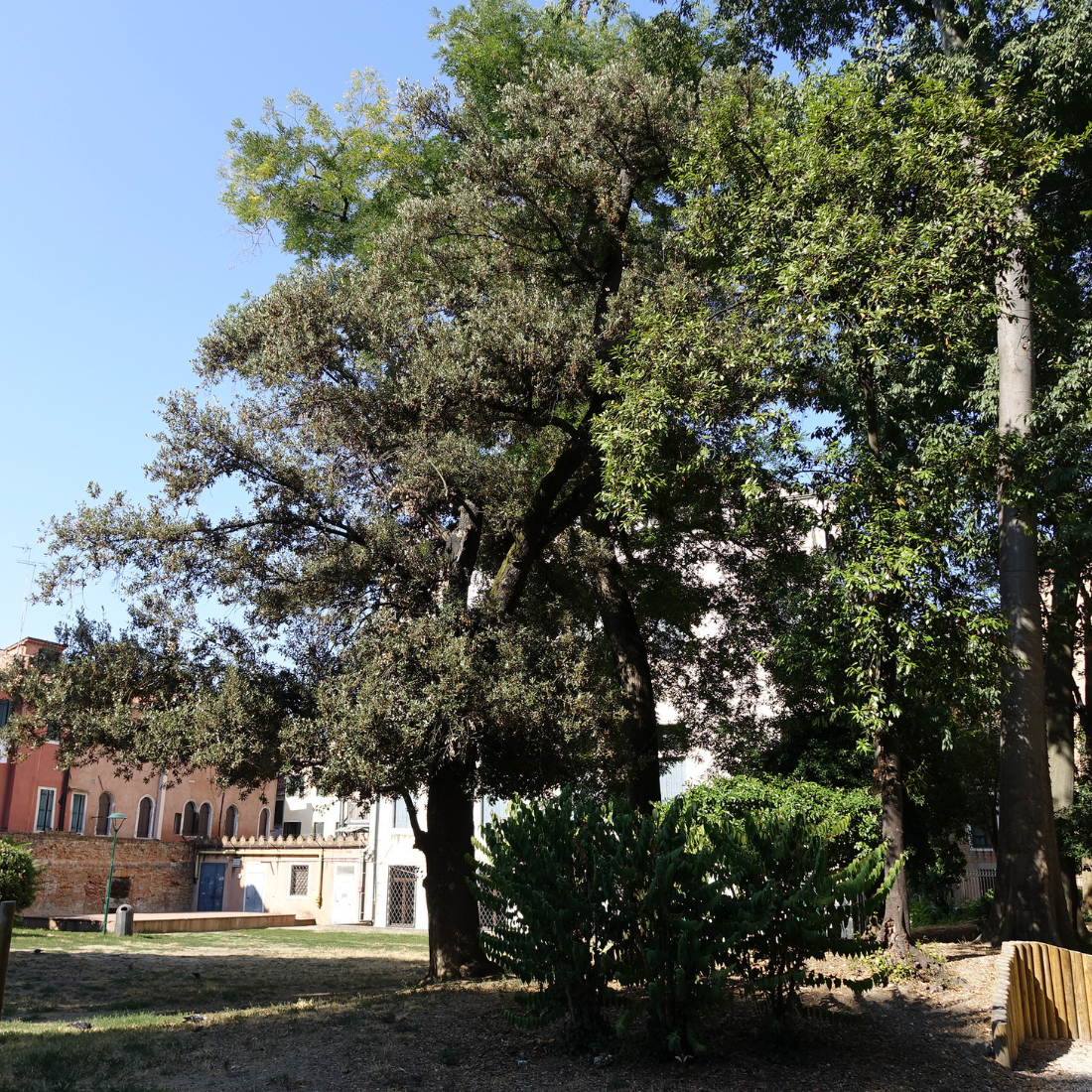
ph. Gabriele Vattolo - Comune di Venezia
THE SAVORGNAN PARK
This park, originally a botanical garden, represents a rare surviving example of the many gardens that lined the rio di Cannaregio in the 17th century. It was created by joining the ancient gardens of the adjoining Savorgnan and Manfrin palaces.
In fact, it is located exactly behind Palazzo Savorgnan, a building constructed at the end of the 17th century by architect Giuseppe Sardi, and is just a few steps from Ponte delle Guglie, a few hundred metres from the Santa Lucia railway station.
Today, it is one of the largest public parks in the city, measuring approximately 9500 square metres, and is characterised by a beautiful lawn with gentle slopes, equipped with benches along the tree-lined paths, drinking water fountains, a children's play area and fitness equipment.
There is also an area for dogs of different sizes.
It can also be accessed from an entrance located in a side street of Campo San Geremia.
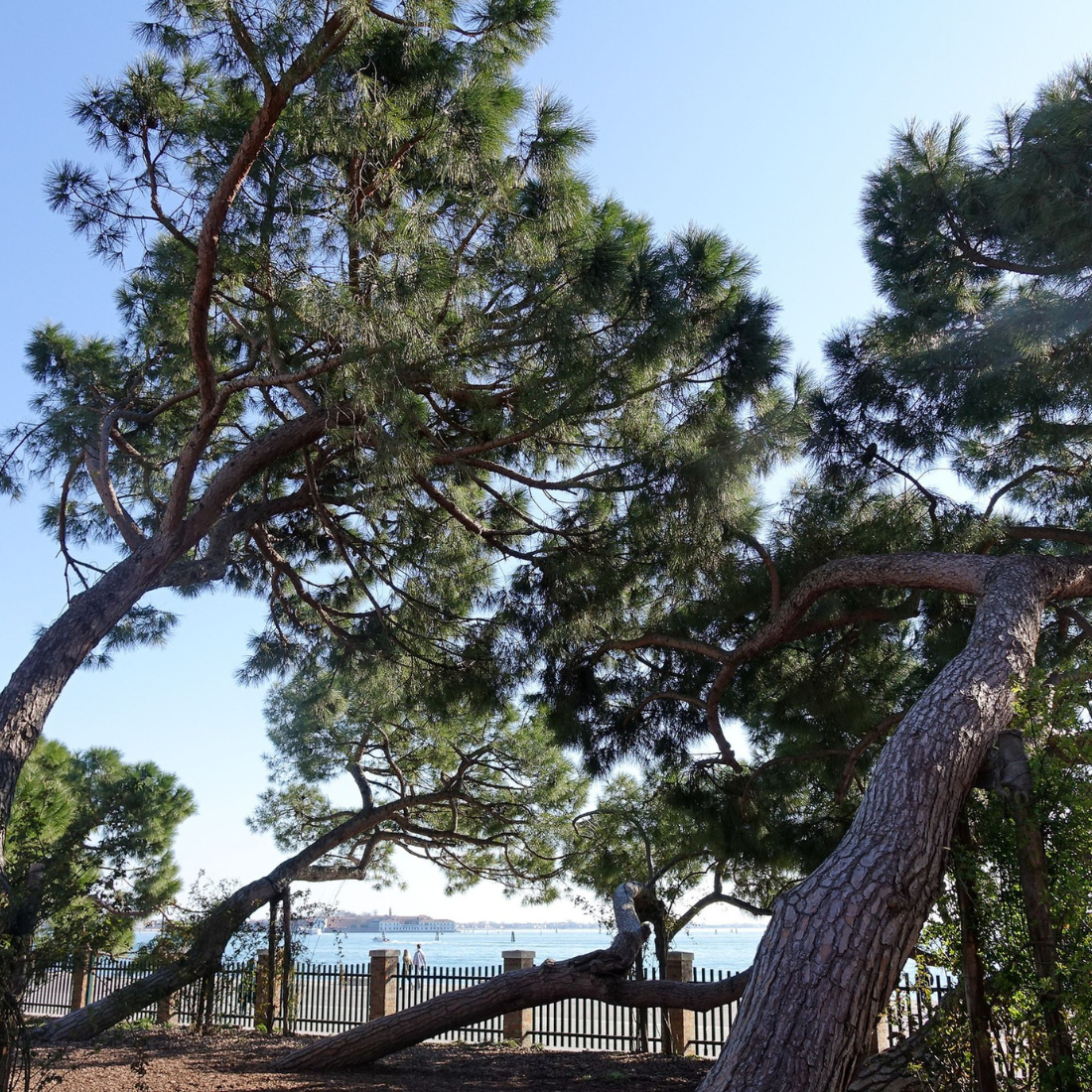
ph. Gabriele Vattolo - Comune di Venezia
THE MARINARESSA GARDENS
Overlooking the rRiva Sette Martiri, this enclosed green area is a small public park covering 2200 square metres in the Castello district.
It is easily reached from San Marco with a walk of a few minutes, or by vaporetto getting off at the Giardini stop. The Giardini della Marinaressa take their name from the 15th-century building in the middle, called the 'Venice's marinaressa': originally it was housing for sailors who had distinguished themselves for services rendered to the Serenissima.
This green space is used as a collateral venue for Biennale exhibitions, hosting displays that are freely accessible to the audience.
The area has four entrances connecting Via Garibaldi with the Sette Martiri waterfront. Along the pathways are benches, waste bins and a drinking water fountain. A number of public toilets are located nearby.
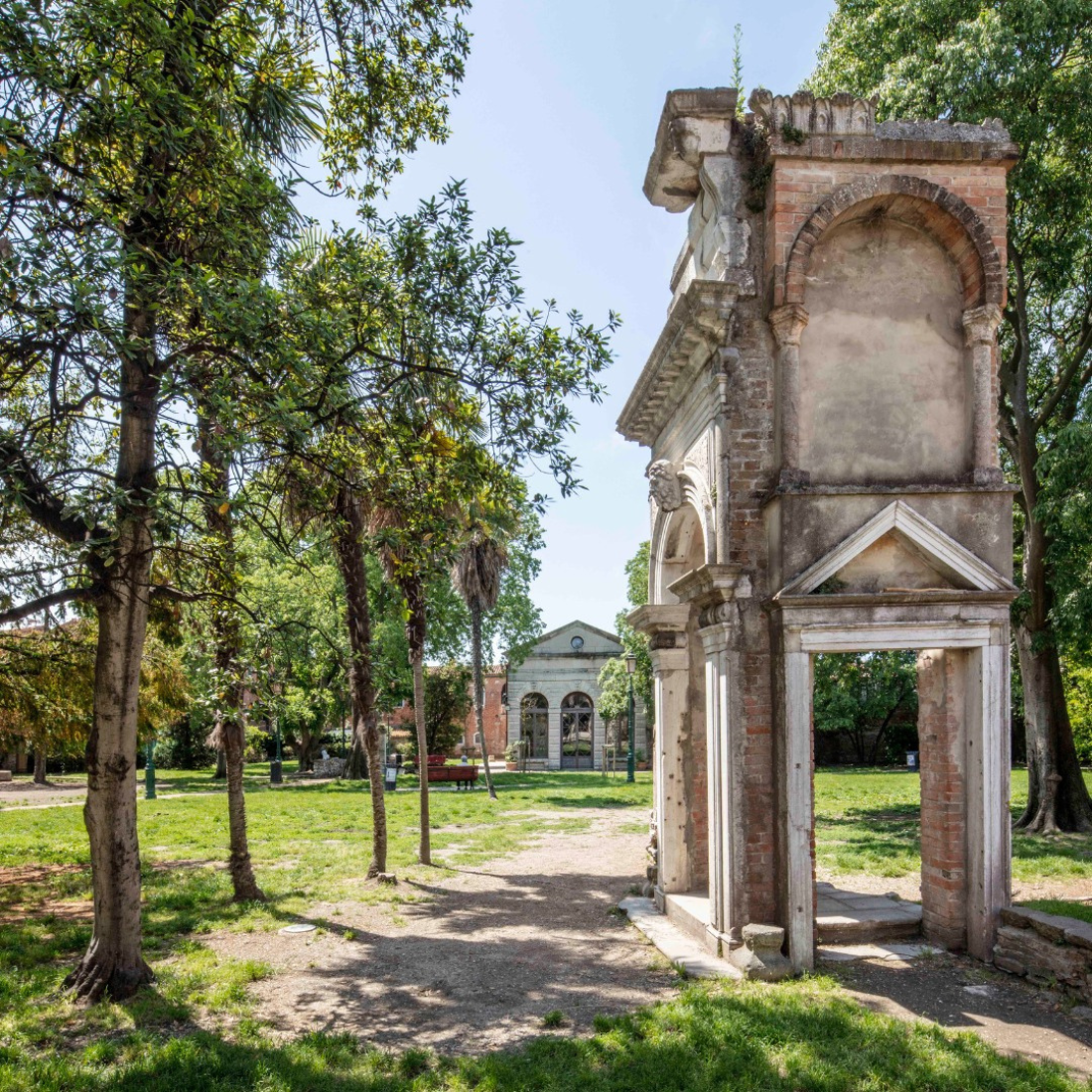
ph. Giorgio Bombieri - Comune di Venezia
THE PARK OF VILLA GROGGIA
The 19th-century Groggia garden, now a public park, occupies an area in Cannaregio where Palazzo Donà stood in the 16th century with a beautiful garden and vegetable gardens that stretched as far as the lagoon. In 1823 the palace was demolished to make way for a few dwellings and a brick building used as a warehouse, later transformed in the 20th century into a theatre. At the end of the 19th century, the new owner of the area, Giuseppe Groggia, built a villa surrounded by a vast garden in romantic style. Although originally much larger, the garden is still characterised by the presence of architectural and ornamental elements of great charm, such as statues, arches, capitals and columns, most probably from the remains of the ancient Palazzo Donà. The 5,000 metres occupied by the park are traversed by paved paths that lead from the manor house to the Art Nouveau greenhouse, the site of educational activities, and to the little theatre, where shows, concerts and workshops for children and families are regularly held. Upon Giuseppe Groggia's death, the villa and park were assigned to the San Gioacchino Institute in Mestre, which he founded for the education of poor girls. Since 1975, they have been owned by the Venice City Council.



